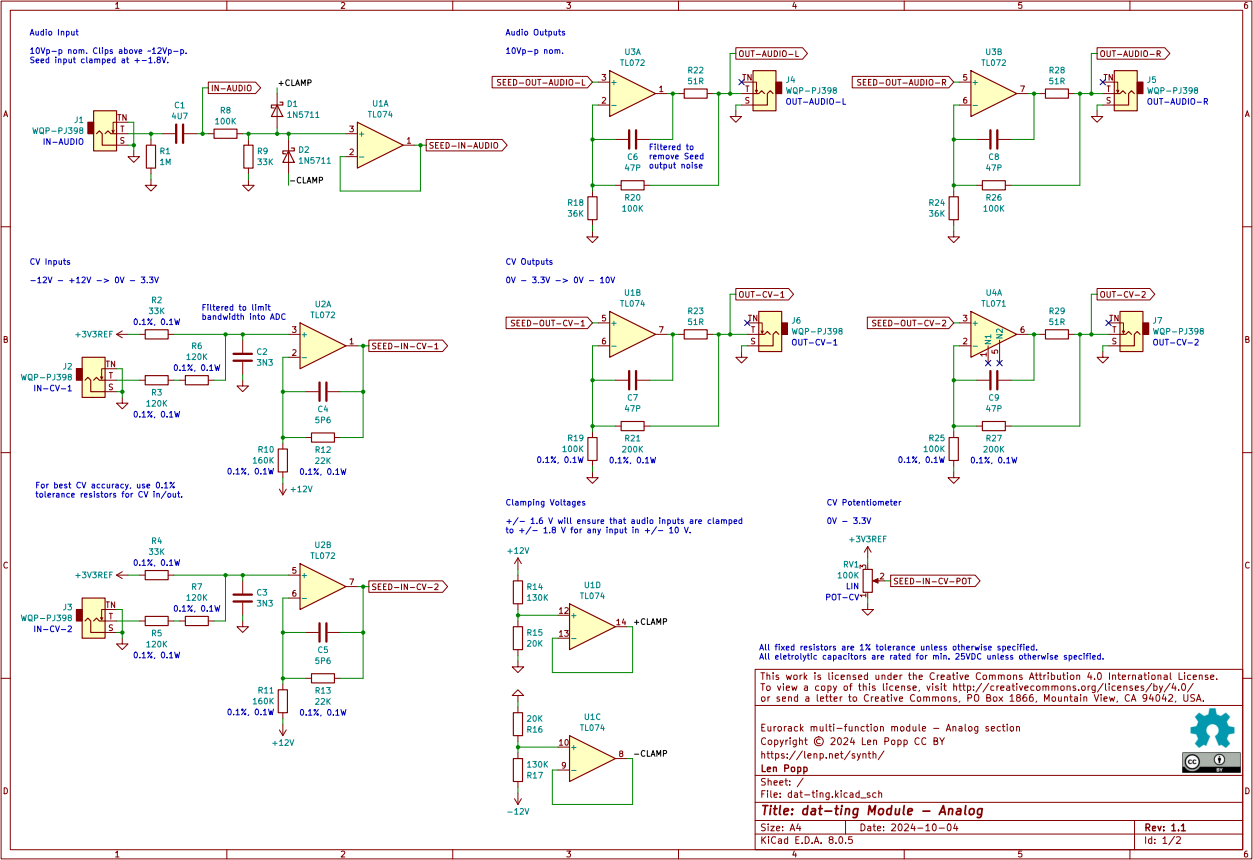dat ting is a 10HP multi-function Eurorack DSP module. Hardware and software are open source. GitHub repository is here.
Hardware Features
- 10 HP Eurorack module
- Based on an Electrosmith Daisy Seed board with an STM32 ARM Cortex-M7 microcontroller
- Inputs: 1 x audio, 2 x CV/gate
- Outputs: 2 x audio, 2 x CV/gate
- Rotary encoder and OLED display for microcontroller UI
- Multi-purpose pushbutton and potentiometer
- USB connection for firmware download and debugging
Notes
Please note that I am a hobbyist, not a trained electronics engineer. No guarantees!
dat ting is open source hardware. The hardware design is published under the Creative Commons Attribution license. Firmware is published under the MIT license.
This module requires a 10-pin Eurorack power cable. The microcontroller board is powered by either the USB connection or the Eurorack +12 V supply, whichever is turned on. (It’s OK to have both plugged in at the same time.)
An OLED display and a rotary encoder are used for a user interface to the microcontroller, and to display fun animations.
For the USB connection, I have the USB cable running through a hole in the front panel and a right-angle adapter to the Daisy Seed. It looks a bit janky and it’s hard to plug and unplug but it works.
CV In & Out
There’s an important difference between the control voltage inputs and outputs on this module. The CV inputs are bipolar, meaning they can accept a positive or negative input voltage, but the CV outputs are unipolar, only able to produce positive voltages (0 V to +10 V nominal).
The reason for this is the microcontroller’s DAC (digital-to-analog converter) is less precise than its ADC (analog-to-digital converter). The DAC only has 12 bits of precision, which is barely enough to produce a precise one-volt-per-octave pitch CV over 10 octaves. The ADC, on the other hand, produces 16-bit results, which is enough to give good precision over the entire input voltage range.
I want the module to be able to handle volt-per-octave input and output with reasonable precision, so I sacrificed the ability to produce bipolar CV output in order to get good pitch tracking.
The input and output op-amp stages use precision resistors, which should help with CV accuracy.
PCBs
PCB layouts are provided in KiCad and gerber formats, on GitHub. A PCB layout for a drilled front panel (with no labels) is also included.
The PCBs that I designed for this module can be ordered from OSH Park:
Schematic
PDF version is here. KiCad files are on GitHub.


Software Used
KiCad 8.0.5
